Porsche Taycan Turbo GT: The Taycan for the racetrack
There is no electric drive with three motors for the new top-of-the-range Taycan, as some rumours have claimed. However, the Taycan Turbo GT still offers impressive performance. In overboost mode, 815 kW is available, which equates to 1,108 hp. With the further increased torque of 1,340 Nm (230 Nm more than the currently most powerful Taycan), the Turbo GT can accelerate from a standstill to 100 kph in just 2.2 seconds. For racetrack performance, the top speed has also been noticeably increased from 260 to 305 kph.
Porsche introduced its 900-amp power converter in the Taycan Turbo GT. The system has been optimised for use on the racetrack and is similar in function to the Attack Mode of the same name in Formula E racing cars. Other Taycan models use pulse inverters with 600 amps.
“The Turbo GT with Weissach package sets new standards in almost every metric. These include acceleration and braking, an Attack Mode that’s intuitive to use and a powertrain designed for maximum traction and performance,” says Porsche development driver Lars Kern.
Externally, the Taycan Turbo GT is characterised by a few minor changes. The entire car is lower with the racetrack-optimised suspension, and the bumpers at the front and rear have been slightly adapted. The fixed rear spoiler made of carbon fibre is, of course, visually striking. The new forged rims are ten kilograms lighter. But there are also differences in the details. The Taycan Turbo GT only has the DC charging port on the right-hand side. The second charging port on the left for AC charging has fallen victim to weight reduction. The Turbo GT is not about maximum convenience when charging.
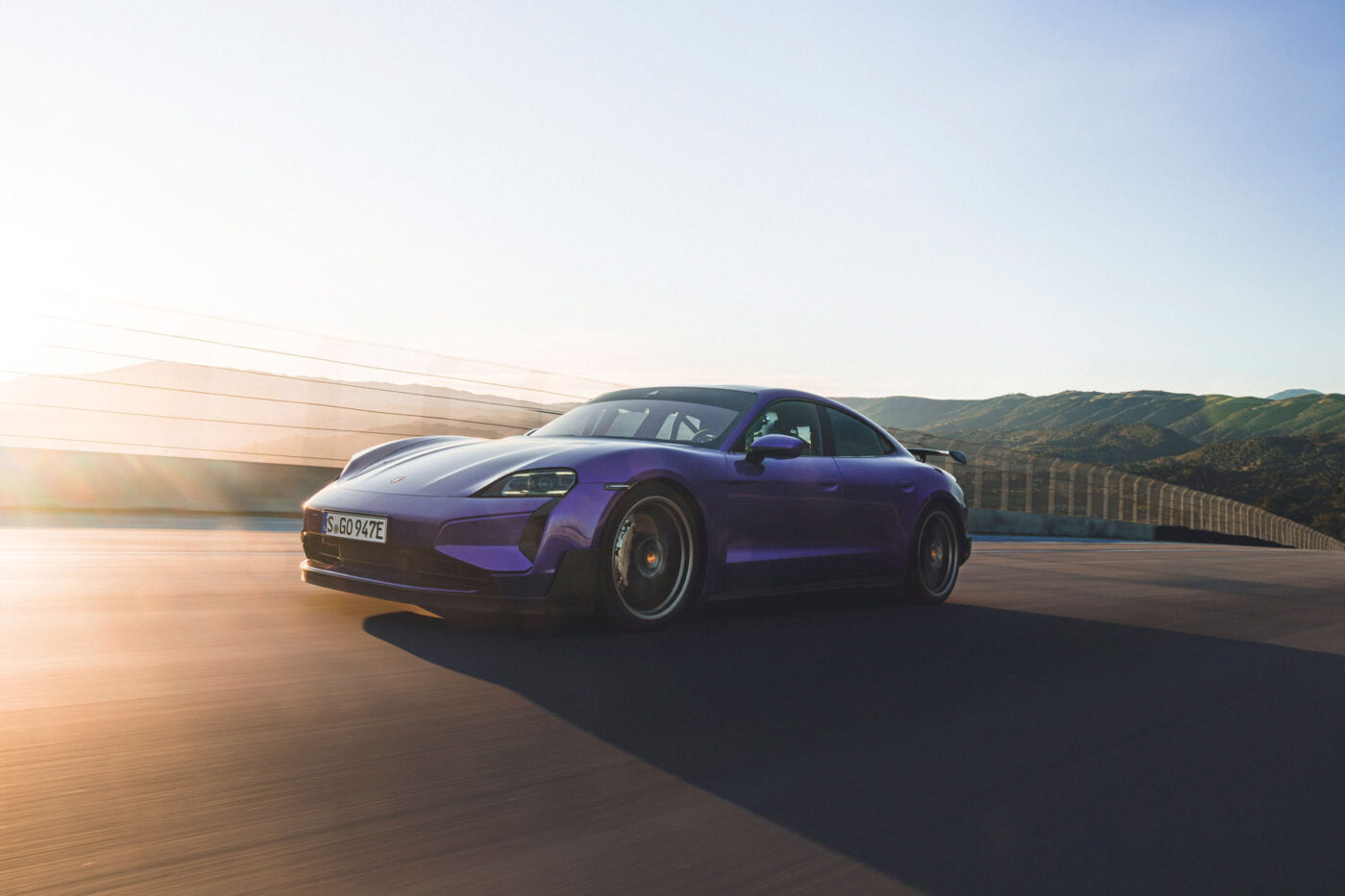
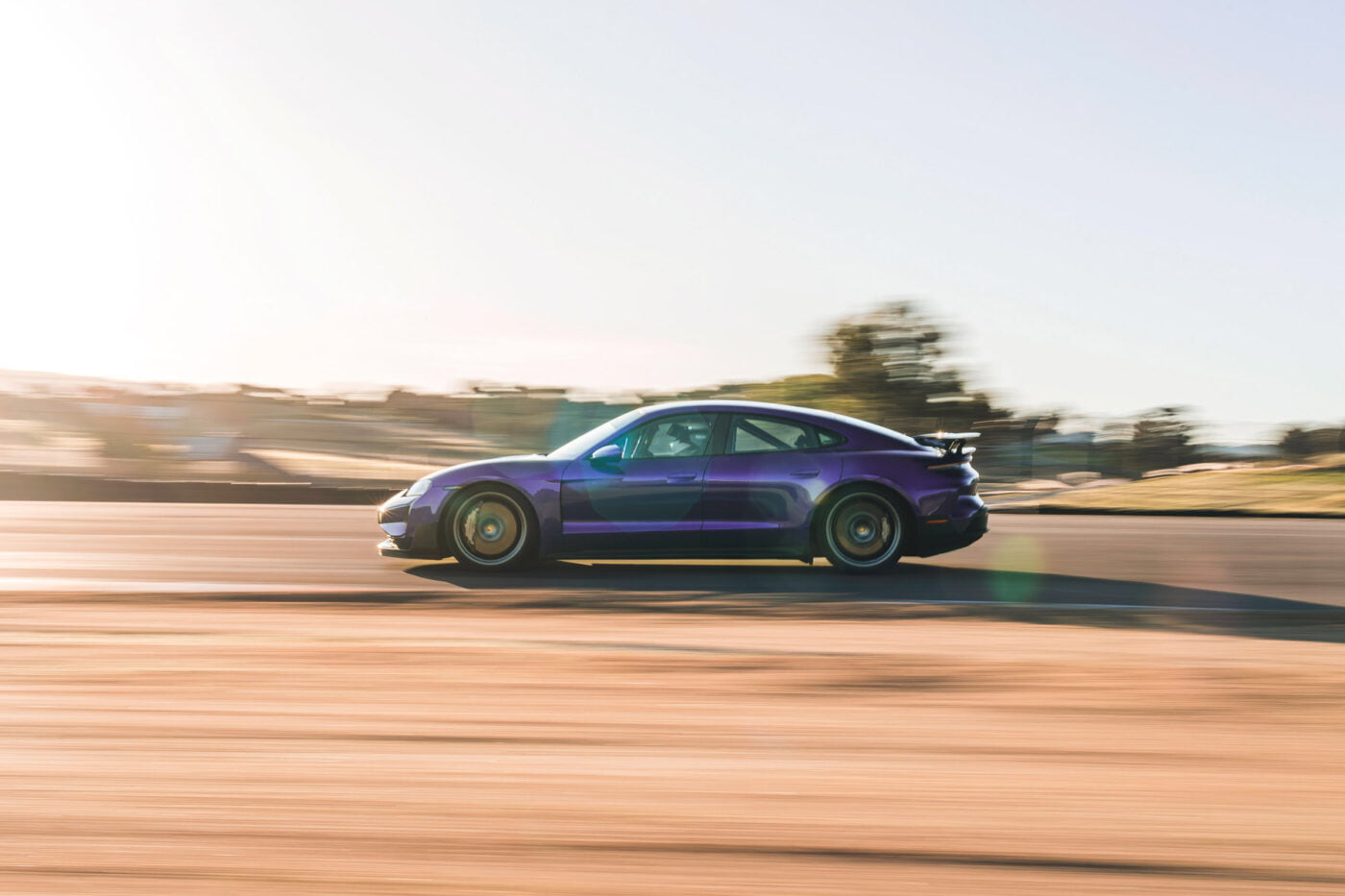
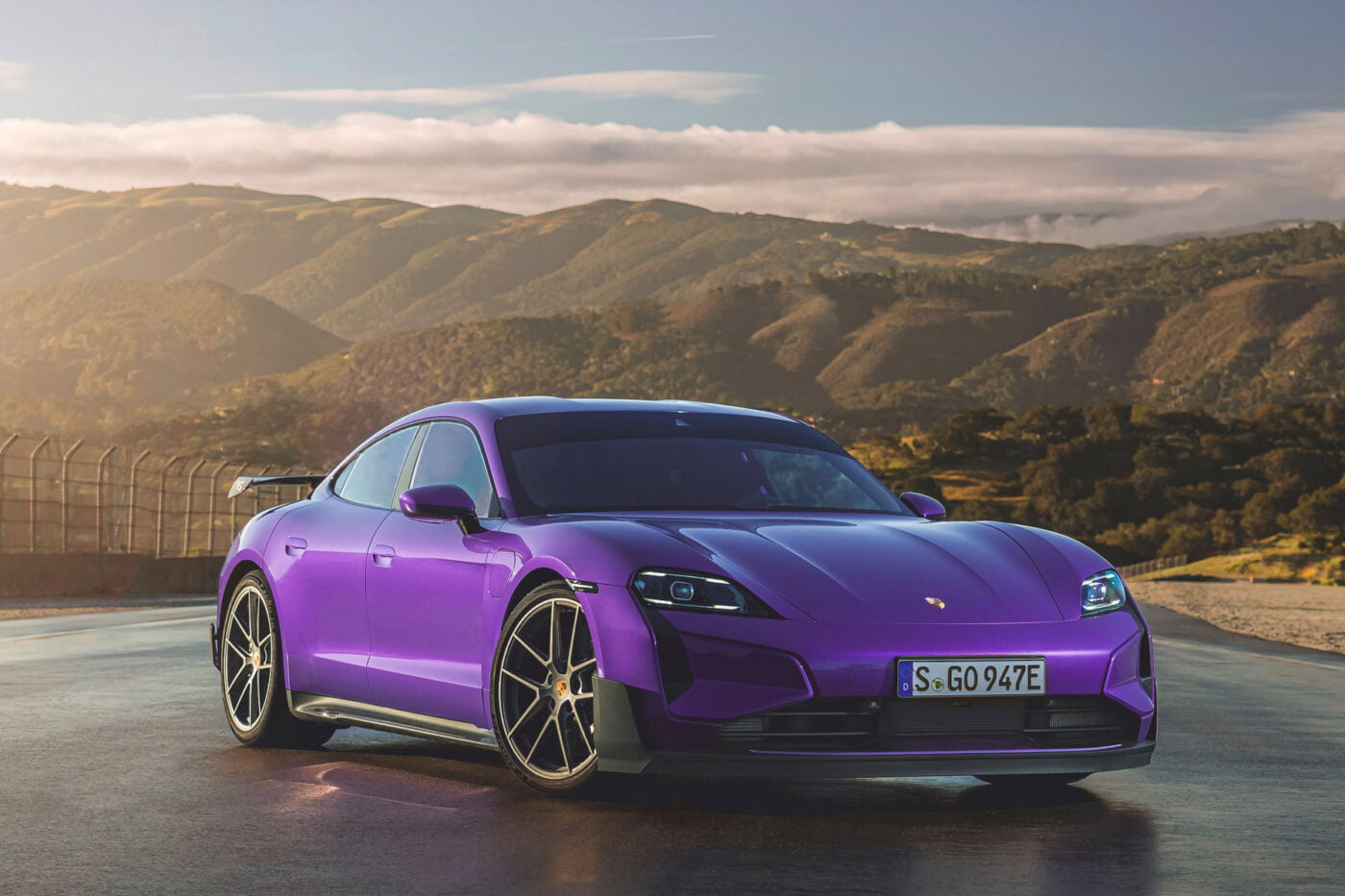

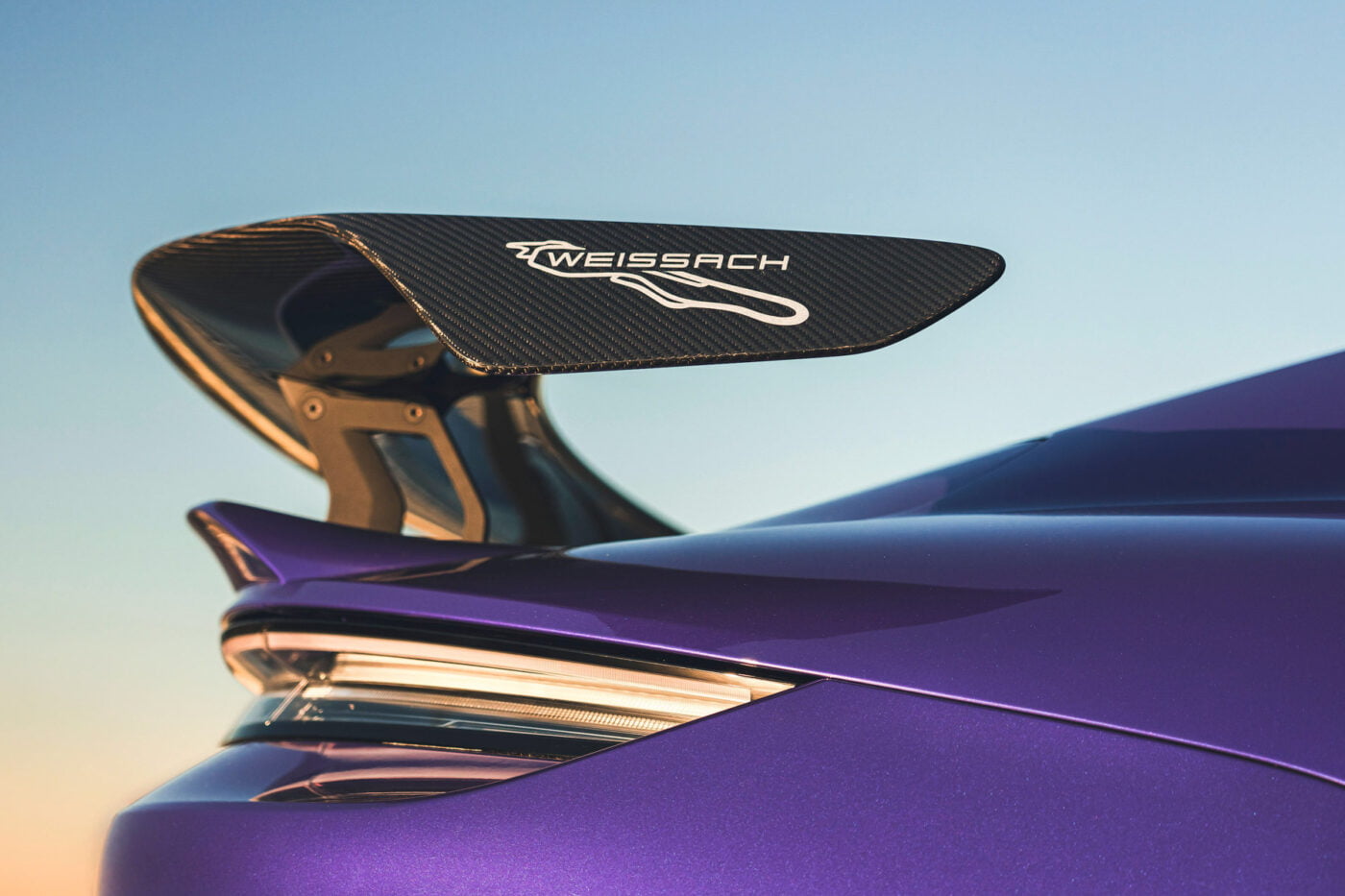
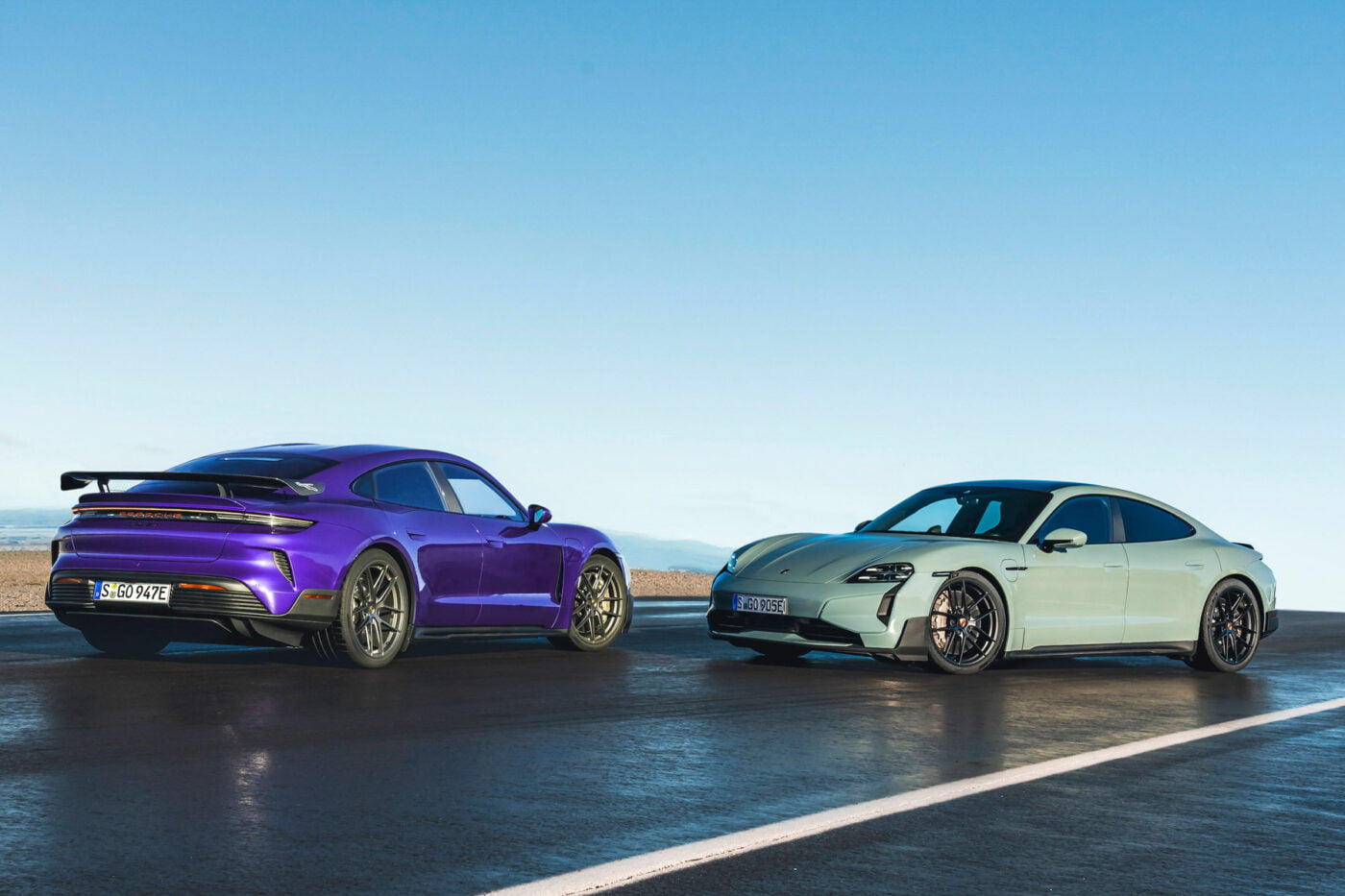
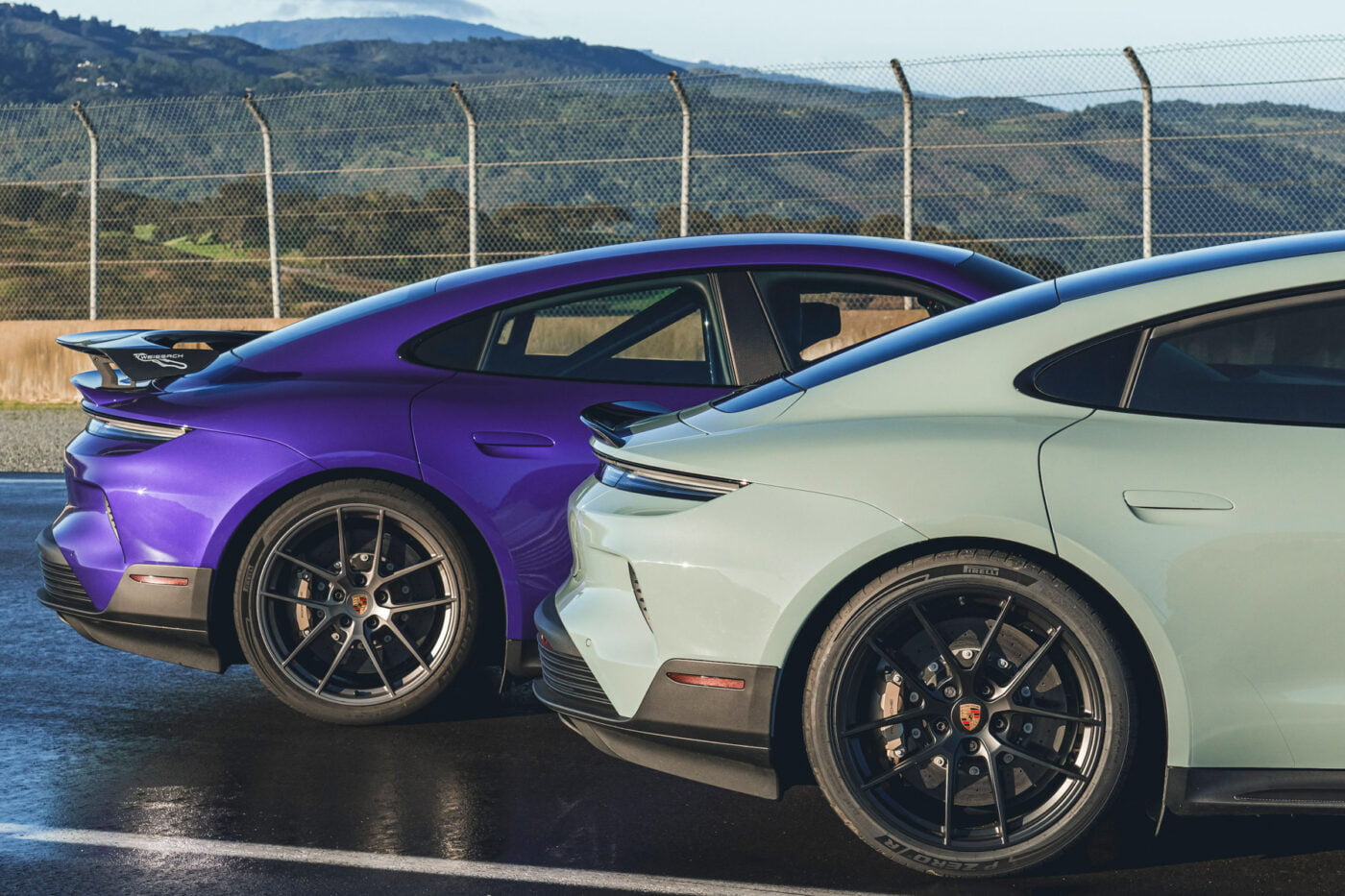
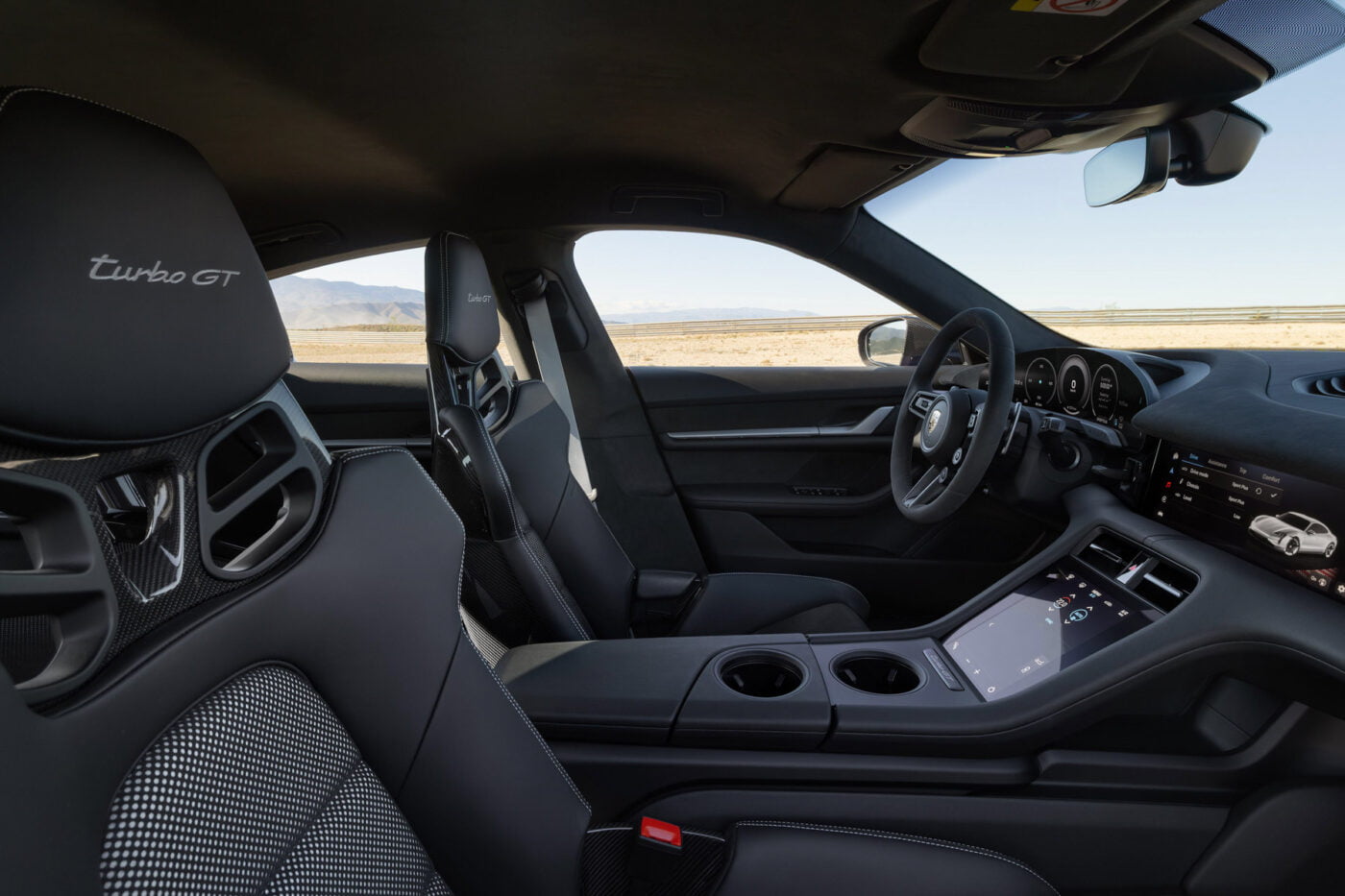
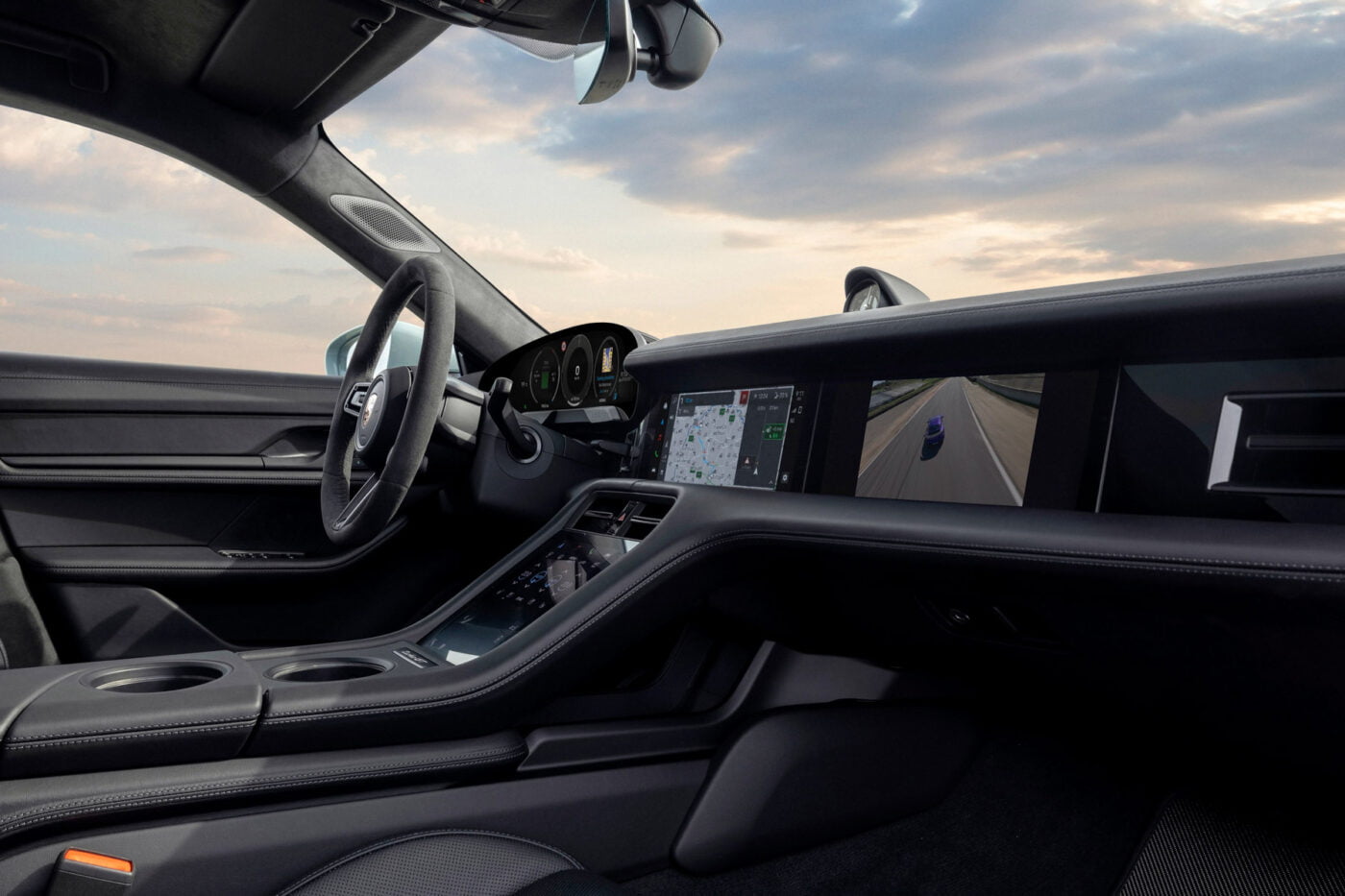

In addition to the second charging port, a lot of weight was saved in the interior. The B-pillar trims, the exterior mirrors’ upper shells, and the side sill inserts are made of carbon fibre. In addition, the full bucket seats made of carbon fibre, a lightweight boot tray and the elimination of the electric closing aid for the tailgate (Powerliftgate) save weight. That makes the Turbo GT up to 75 kilograms lighter than a Turbo S.
The Taycan Turbo GT is the version with which Porsche beat the lap time of the Taycan Turbo S on the Nordschleife of the Nürburgring by 26 seconds. At the time of publication at the beginning of January, there was only talk of a “Taycan pre-series car,” in which development driver Kern had achieved a time of 7:07.55 minutes. There were no details about the vehicle at the time – but the permanently installed rear spoiler and the splitter at the front made it clear that it was not one of the previous variants. With the Turbo GT, Porsche also broke the electric lap record on the Laguna Seca Raceway in California – where the world premiere took place. Kern’s time of 1:27.87 minutes was also several seconds under the old electric record of 1:30.5 minutes.
| Taycan | Taycan 4S | Taycan Turbo | Taycan Turbo S | Taycan Turbo GT* | |
|---|---|---|---|---|---|
| Drive | RWD | AWD | AWD | AWD | AWD |
| Power | 300 kW | 340 kW | 520 kW | 570 kW | 580 kW |
| Power Overboost | 300 kW | 400 kW | 650 kW | 700 kW | 815 kW |
| Torque | 410 Nm | 695 Nm | 940 Nm | 1.110 Nm | 1.340 Nm |
| Acceleration | 4,8 s | 3,7 s | 2,7 s | 2,4 s | 2,2 s |
| Top speed | 230 kph | 250 kph | 260 kph | 260 kph | 305 kph |
| WLTP range | 678 km | 642 km | 630 km | 630 km | 555 km |
| Battery capacity | 89 kWh | 89 kWh | 105 kWh | 105 kWh | 105 kWh |
| Charging power DC | 270 kW | 270 kW | 320 kW | 320 kW | 320 kW |
| Charging time DC 10-80% | 18 min | 18 min | 18 min | 18 min | 18 min |
| Price | 101.500 euros | 120.900 euros | 175.600 euros | 209.900 euros | – |
Porsche only presented the Taycan facelift around four weeks ago. The regular Taycan, Taycan 4S, Taycan Turbo and Taycan Turbo S models have already seen a significant increase in power, with the top-of-the-range model briefly reaching 700 kW in overboost mode. The PSM on the rear axle, in particular, has been boosted by up to 80 kW, depending on the version. With over 1,110 Nm, the Taycan Turbo S can accelerate to 100 kph in just 2.4 seconds.
The Taycan Turbo GT also inherits the battery with improved cells from the two Turbo models. The energy content increases from 93 to 105 kWh, of which 97 kWh are usable. As the charging power increases to 320 kW at the peak, even the charging time is reduced: instead of the previous 22.5 minutes, the revised Taycan now only needs 18 minutes to charge from 10 to 80 per cent, even though the battery has become larger.
However, it comes at a price. The Turbo models start at just under 176,000 and 210,000 euros respectively. Porsche has not yet given any list prices for the new Taycan Turbo GT at the time of its premiere. However, the most dynamic electric Porsche is unlikely to be really cheap.

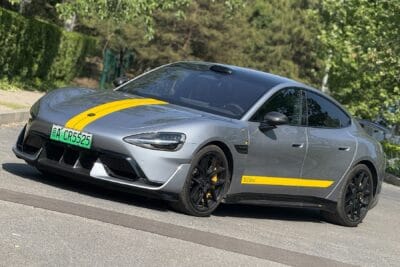

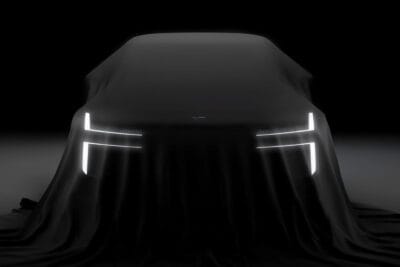
0 Comments